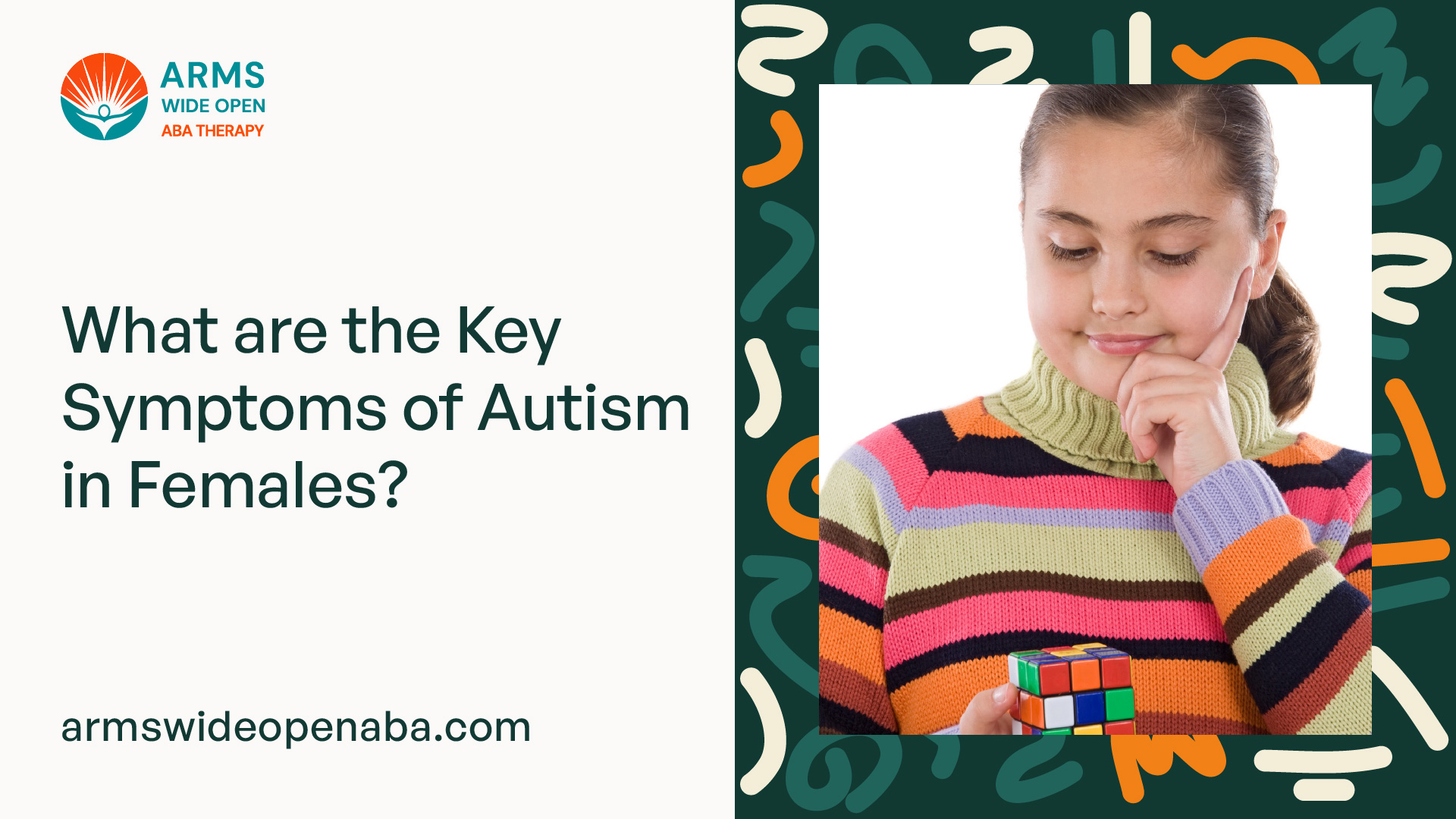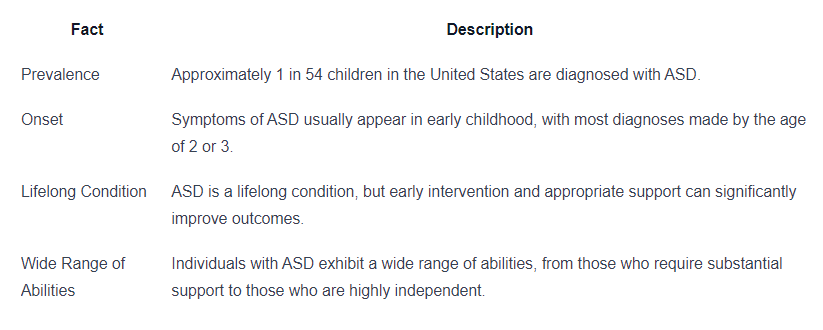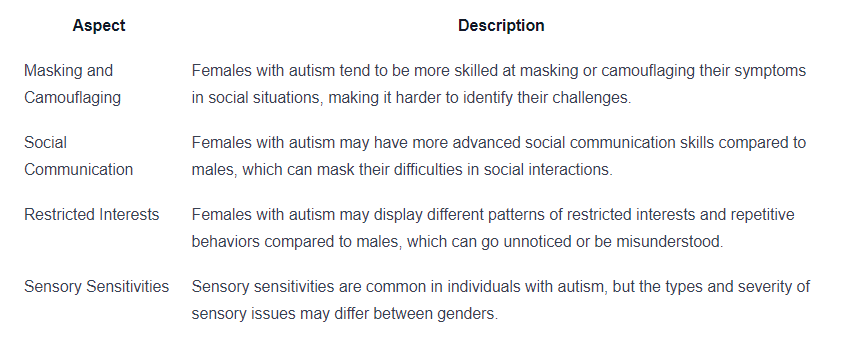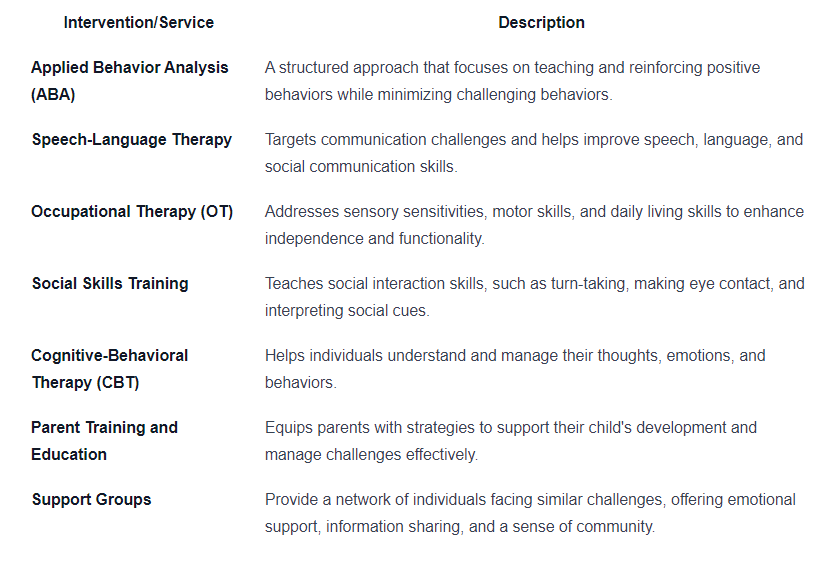What are the Key Symptoms of Autism in Females?
Unveiling the key symptoms of autism in females. Understand the unique challenges and seek early intervention.


Understanding Autism in Females
To gain a deeper understanding of autism in females, it is important to explore both the general overview of Autism Spectrum Disorder (ASD) and the gender differences in autism diagnosis.
Overview of Autism Spectrum Disorder
Autism Spectrum Disorder (ASD) is a neurodevelopmental disorder characterized by difficulties in social interaction, communication, and the presence of repetitive behaviors or restricted interests. ASD is a spectrum disorder, meaning that individuals with ASD can vary greatly in their abilities and challenges.
Here are some key points about ASD:

Gender Differences in Autism Diagnosis
Historically, autism has been predominantly associated with males. However, research has shown that autism presents differently in females, often leading to challenges in diagnosis and identification. The diagnostic criteria for ASD were originally developed based on male presentations, which can make it more difficult to recognize ASD in females.
Here are some notable gender differences in autism diagnosis:

Recognizing and understanding these gender differences is crucial for ensuring that females with autism receive appropriate support and interventions. By raising awareness and promoting accurate diagnostic practices, we can improve the identification and understanding of autism in females, leading to better outcomes and quality of life for individuals on the spectrum.
Key Symptoms of Autism in Females
Autism is a complex neurodevelopmental disorder that can manifest differently in males and females. While some symptoms may overlap, there are key symptoms that are often observed in females with autism. Understanding these symptoms is crucial for early recognition and intervention. Here are the key symptoms of autism in females:
Social Communication Challenges
Females with autism may experience difficulties in social communication. They may struggle with nonverbal cues, such as body language and facial expressions, making it challenging to understand social interactions. Additionally, they may have difficulty initiating and maintaining conversations, leading to social isolation.
It's important to note that females with autism often exhibit better social mimicry and camouflaging skills compared to their male counterparts, which can mask their social communication challenges. This can result in delayed or missed diagnosis.
Sensory Sensitivities
Sensory sensitivities are commonly observed in females with autism. They may have heightened sensitivity to certain sensory stimuli, such as loud noises, bright lights, or textures. These sensitivities can significantly impact their daily lives, causing discomfort and anxiety.
On the other hand, some females with autism may exhibit sensory-seeking behaviors, where they actively seek out intense sensory experiences. These behaviors can include repeated body movements, such as spinning or rocking.
Repetitive Behaviors and Restricted Interests
Repetitive behaviors and restricted interests are hallmark symptoms of autism in females. These behaviors can manifest in various ways, such as repetitive movements (e.g., hand-flapping), insistence on sameness, or an intense focus on specific topics or objects. Females with autism may develop intense and narrow interests, often surpassing those of their peers.
It's important to recognize that the nature and presentation of these behaviors may differ between males and females with autism. Females tend to exhibit more internalizing behaviors, such as anxiety or depression, which can further complicate the diagnosis process.
Understanding these key symptoms of autism in females is essential for early recognition and appropriate support. If you suspect that you or someone you know may exhibit these symptoms, seeking a professional evaluation is recommended. Early intervention and support services can greatly improve outcomes and quality of life for individuals with autism.

Masking and Camouflaging
Autism in females often presents unique challenges when it comes to identification and diagnosis. One important aspect to consider is the concept of masking, which can make it difficult to recognize the key symptoms of autism in females.
The Concept of Masking
Masking refers to the ability of individuals, particularly females with autism, to hide or suppress their autistic traits in social situations. This masking behavior often involves imitating or mimicking neurotypical behaviors, which can make it challenging to identify autism in females.
Masking can manifest in various ways. For example, individuals may consciously copy the social behaviors and communication styles of their peers, making it appear as if they are fitting in seamlessly. They may also develop coping strategies to navigate social situations, such as rehearsing conversations or observing others to learn appropriate social cues.
While masking can help individuals with autism blend in and avoid standing out, it comes at a cost. Masking requires significant effort and can be mentally and emotionally exhausting. It can lead to feelings of anxiety, stress, and a sense of disconnect from one's true self. Furthermore, masking can delay or impede the identification and diagnosis of autism in females, as their outward behavior may not align with the typical stereotypes associated with autism.
Challenges in Identifying Autism in Females
The masking behavior exhibited by females with autism poses significant challenges in identifying the condition. Due to their ability to camouflage their autistic traits, females may be overlooked or misdiagnosed, leading to a delay in receiving appropriate support and intervention.
Here are some factors that contribute to the challenges in identifying autism in females:
- Social Expectations: Society often holds rigid expectations about how females should behave, communicate, and interact. Females with autism may work harder to conform to these expectations, making it less apparent that they are experiencing difficulties.
- Diagnostic Criteria: The diagnostic criteria for autism have traditionally been based on research conducted primarily on males. This bias has resulted in a diagnostic framework that may not fully capture the unique presentation of autism in females. As a result, females may not meet the standard criteria for diagnosis, leading to underdiagnosis or misdiagnosis.
- Differences in Symptom Presentation: Females with autism may exhibit different patterns of symptoms compared to males. For example, they may have better social communication skills, but struggle with internalizing their difficulties, leading to anxiety or depression. These atypical presentations can be easily overlooked or attributed to other conditions.
- Coping Mechanisms: Females with autism often develop sophisticated coping mechanisms to navigate social situations. This can include imitating or mirroring the behavior of their peers, making it challenging to differentiate between genuine social skills and masking.
Recognizing and understanding the challenges related to masking and identifying autism in females is crucial in ensuring early recognition and appropriate support for individuals who may be affected by autism. By addressing these challenges, we can work towards a more inclusive and accurate understanding of autism in females.
Diagnosis and Challenges
When it comes to diagnosing autism in females, there are unique challenges that contribute to misdiagnosis and underdiagnosis. It is crucial to understand these challenges and the importance of early recognition and intervention.
Misdiagnosis and Underdiagnosis
Autism in females often goes undiagnosed or misdiagnosed due to several factors. One factor is the diagnostic criteria, which have historically been based on research conducted predominantly on males. As a result, the symptoms and behaviors typically associated with autism may present differently in females, leading to overlooked or misinterpreted signs.
Moreover, females with autism tend to exhibit better social imitation and communication skills compared to males. This ability to mask their difficulties can make it harder for professionals to recognize the underlying autistic traits. They may engage in "camouflaging," where they consciously or unconsciously imitate neurotypical behaviors to fit in and hide their difficulties. This masking can further complicate the diagnostic process.
Importance of Early Recognition and Intervention
Early recognition and intervention are crucial for individuals with autism, regardless of gender. However, due to the challenges in diagnosis, it is especially important for females to receive timely support.
Early recognition allows for the implementation of appropriate interventions and therapies, which can significantly improve outcomes for individuals with autism. Early intervention focuses on enhancing communication and social skills, managing sensory sensitivities, and addressing behavioral challenges. It provides individuals with the necessary tools and strategies to navigate the social and academic aspects of their lives.
By recognizing and addressing autism at an early stage, females can receive the support they need to reach their full potential. This includes accessing educational accommodations, therapeutic services, and support groups tailored to their specific needs.
It is important to note that every individual is unique, and autism manifests differently in each person. Therefore, a comprehensive evaluation by a qualified professional is essential for an accurate diagnosis. The evaluation may involve assessments, interviews, and observations to gather information about the individual's developmental history, social communication skills, and behavioral patterns.
Understanding the challenges associated with diagnosing autism in females and emphasizing the importance of early recognition and intervention can help ensure that females with autism receive the appropriate support and resources they need to thrive.
Support and Resources
When it comes to autism, seeking support and accessing appropriate resources is crucial. For individuals who suspect they may have autism or parents who suspect their daughters may be on the autism spectrum, there are various avenues to explore. This section will discuss two key aspects of support and resources: seeking professional evaluation and accessing therapeutic interventions and support services.
Seeking Professional Evaluation
If you or someone you know exhibits symptoms of autism, it is important to seek a professional evaluation. A comprehensive assessment by a qualified healthcare professional, such as a psychologist or psychiatrist specializing in autism, can provide an accurate diagnosis and guide appropriate interventions.
During the evaluation process, the healthcare professional will typically use standardized assessments, conduct interviews, and gather information from multiple sources to gain a comprehensive understanding of the individual's symptoms and experiences. It is important to approach the evaluation process with openness, honesty, and a willingness to provide detailed information to assist in the diagnostic process.
Here are a few steps to consider when seeking a professional evaluation for autism:
- Research reputable professionals: Look for healthcare professionals who specialize in autism spectrum disorders and have experience working with females.
- Schedule an appointment: Contact the chosen professional to schedule an evaluation appointment.
- Prepare for the evaluation: Gather relevant information, such as developmental history, medical records, and any previous assessments or evaluations.
- Attend the evaluation: Participate actively in the evaluation process, providing detailed information about symptoms, challenges, and any concerns.
- Discuss the results: Following the evaluation, the healthcare professional will provide feedback, discuss the diagnosis (if applicable), and recommend appropriate interventions and support.
Therapeutic Interventions and Support Services
Once a diagnosis is made or if there are significant concerns about autism, accessing appropriate therapeutic interventions and support services is essential. These interventions can help individuals with autism develop skills, manage challenges, and enhance their overall quality of life.
Here are some common therapeutic interventions and support services for individuals with autism:

It is important to consult with healthcare professionals and specialists to determine the most appropriate interventions and support services based on individual needs. Additionally, accessing community resources, such as autism organizations and support groups, can provide valuable information, guidance, and connections to local services.
Remember, early recognition, diagnosis, and intervention are key factors in supporting individuals with autism. By seeking professional evaluation and accessing appropriate therapeutic interventions and support services, individuals with autism can receive the necessary support to thrive and reach their full potential.
Sources
https://www.medicalnewstoday.com/articles/high-functioning-autism-in-females-symptoms
https://adultautismcenter.org/blog/autism-and-women-heres-what-you-need-to-know/
Similar articles
We’re here to help you

Our team is here to assist you in this process. Contact us for any assistance.
it’s easy to apply
We Accept Most Insurances
Our in-network insurance partnerships make ABA therapy more accessible to families throughout our service areas.







Our Insurance Process
We'll request your insurance details to help us verify your plan's coverage for ABA therapy. Once we've received this information, we'll walk you through your benefits, including copayments, deductibles and out-of-pocket maximums, so you know what to expect in advance.
Our team will then handle the preauthorization and all the necessary paperwork.
.svg)





















.jpeg)


































.jpeg)




.jpeg)







.jpeg)











.jpeg)
















